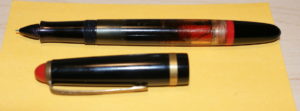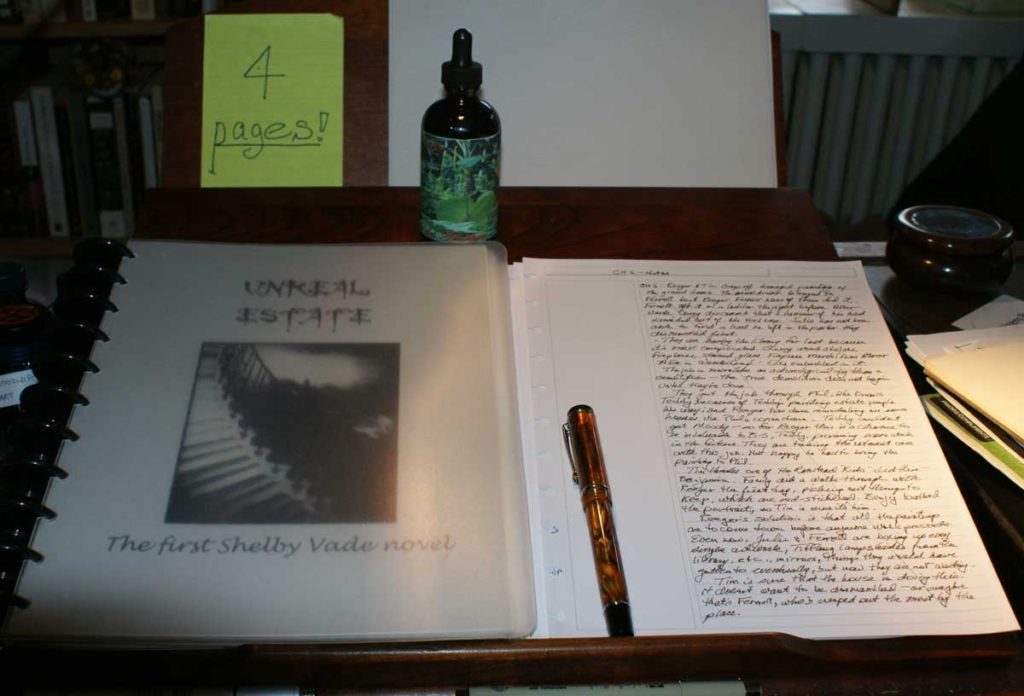So, this week, clearing out a drawer, I came upon the Koh-i-noor Inkograph pen with which I wrote nearly every first draft of everything from about 1973 until its rear tip cracked more than a decade later.

The Inkograph was modeled upon Koh-i-noor technical pens, but it had a fountain pen tip (not a nib, but a tube for writing)—that is, it looked like a technical pen but wrote like a fountain pen. Back at the University of Iowa, Joe Haldeman and I were both Inkograph fanatics, and we remain fountain pen addicts to this day, who (in what can only be considered an act of male pen-bonding) still whip out our current devices and talk about them, about inks, about notebooks. No, really, we’re fine otherwise.
I retired this Inkograph long ago, but found its husk in a sleeve and thought, “What the hell, let’s fire this baby up!” And, lo, filled with some Noodler’s Bad Blue Heron ink, it writes as though I’d never stopped using it. What I notice now is how light it is compared to most of my other fountain pens. It seems to weigh nothing.
Somewhere around 1976, Koh-i-noor stopped manufacturing the Inkograph, more’s the pity. I still have one, pristine, unopened and unused, in its little carboard tube somewhere. Probably, it’s about time I hauled that pen out, loaded it with something vibrant, and penned a story with it.
Pen fanatics will likely already know that the Inkograph went through various permutations as the Rapidograph technical pen itself did. Some of these turn up at pen shows like the Philadelphia Pen Show, but so far I’ve yet to come across another example of this version (and don’t I wish I’d bought up all of the ones that Lind’s Art Supplies had back in ’76 other than the one I’ve never used…maybe it’s time to find out how it writes.)
-gf
Like this:
Like Loading...





